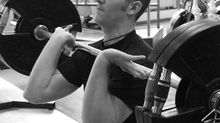Body Fat Uncovered
- Sean Purchase
- Apr 10, 2016
- 3 min read
Your body composition is a measurement of how your body is made up and in its simplest form it can be divided up into muscle, body fat, and bone. Most people are concerned with the headline statistic of body fat percentage to the extent that I often overhear people in the gym asking and telling each other their key stat is. Although this is an important measurement, and a key indicator to someone’s health, it should be noted that comparisons are not always accurate if the methodology of calculating your body fat percentage is not identical.
There are many different ways to measure body fat and no matter which measurement system you use a degree of estimation will be included. That said, there are three methodologies that are currently considered the ‘gold standard’ for body fat measurements. These are: the Dual Energy X-ray Absorptiometry test (‘DEXA’); air displacement plethysmography (commonly know as bod pod); and hydrostatic weighing. All these methods, unfortunately, require very expensive equipment which in turn need to be operated by highly trained staff. They therefore carry with them significant cost implications meaning they are not the most commonly used for this measurement outside groups of elite athletes. More accessible methods for us mere mortals, include using skin fold measurements and bioelectrical impedance analysis (‘BIA’).
Skin fold measurements are simply only as good as the practitioner taking them. Experience and consistency is vital in order to reduce the level of error and increase the accuracy of the results. Additionally, this methodology has been shown to be more accurate on leaner individuals. Interestingly, the figures derived from this methodology are often as much as 5-7% lower than what you would get from a DEXA scan!
Over the past few years, I have been using BIA for both myself and my clients. This way of measuring body fat is very simple to administer and easy to replicate. Devices performing BIA can vary widely from bathroom scales with a body fat measuring function to stand alone devices such as the Bodystat 1500 which are designed to give a wider range of more precise results. Either way, their general availability means that BIA is a good tool to use to track progress. Results will be consistent and, more importantly, comparisons from one measurement to the next can be made. Of course, that does not mean that the results from BIA will be the same as any other means of testing or any of the ‘gold-standard’ methods.
Given the possibility for such deviation in results from the different testing protocols, I thought it would be an interesting experiment to put my own body fat under the microscope, figuratively of course. To gage the accuracy of my own BIA devises, I scanned my body at home on the same day as getting a professionally performed DEXA scan. My results are below.

First of all, my bathroom scales. These are Fitbit Aria which calculated my body fat at 18%.
My more sophisticated BIA devise, the Bodystat 1500, calculated my body fat at 12.3% body fat.

The DEXA results, however, shows my actual body fat is 16.7%. This includes my head albeit as an estimation. Given the BIA devices won’t measure the head, the comparable figure is 16.3% body fat.
This is a significant variation between all three.
Interestingly, the practitioner taking my measurements estimated that I would probably come in at around 10% body fat if I was to use skin fold measurements.
This is a range of 10-18% (9 percentage points). Quite a variation when you consider the healthy range of body fat for men of my age bracket is 12-21% (10 percentage points).
This really does highlight that comparisons from one person to the next can only be made when the methodologies are identical. You should only ever be concerned about you own results and subsequent progress. Try not to get drawn into comparing yourself to others. I have included pictures below of what 16.7% body fat actually looks like! Although, in the interests of full disclosure, I am protecting my own personal ego with a little ab flex!


Recommended Percentage Levels of Body Fat
Female:
20-29 16-24%
30-39 17-25%
40-49 19-28%
50-59 22-31%
60+ 22-33%
Male:
20-29 7-17%
30-39 12-21%
40-49 14-23%
50-59 16-24%
60+ 17-25%





























Comments